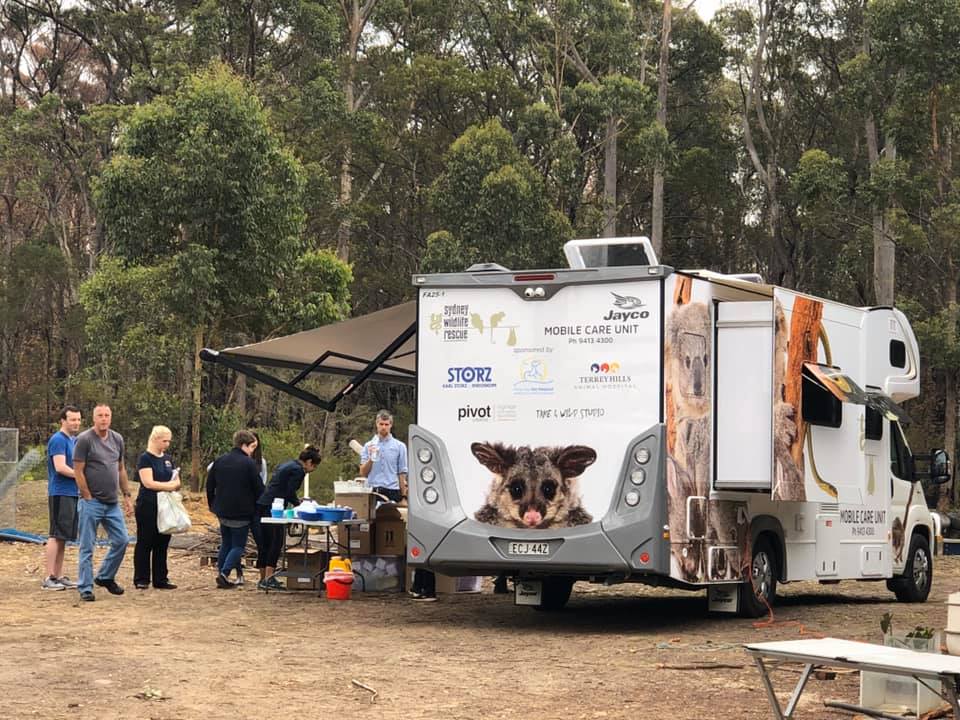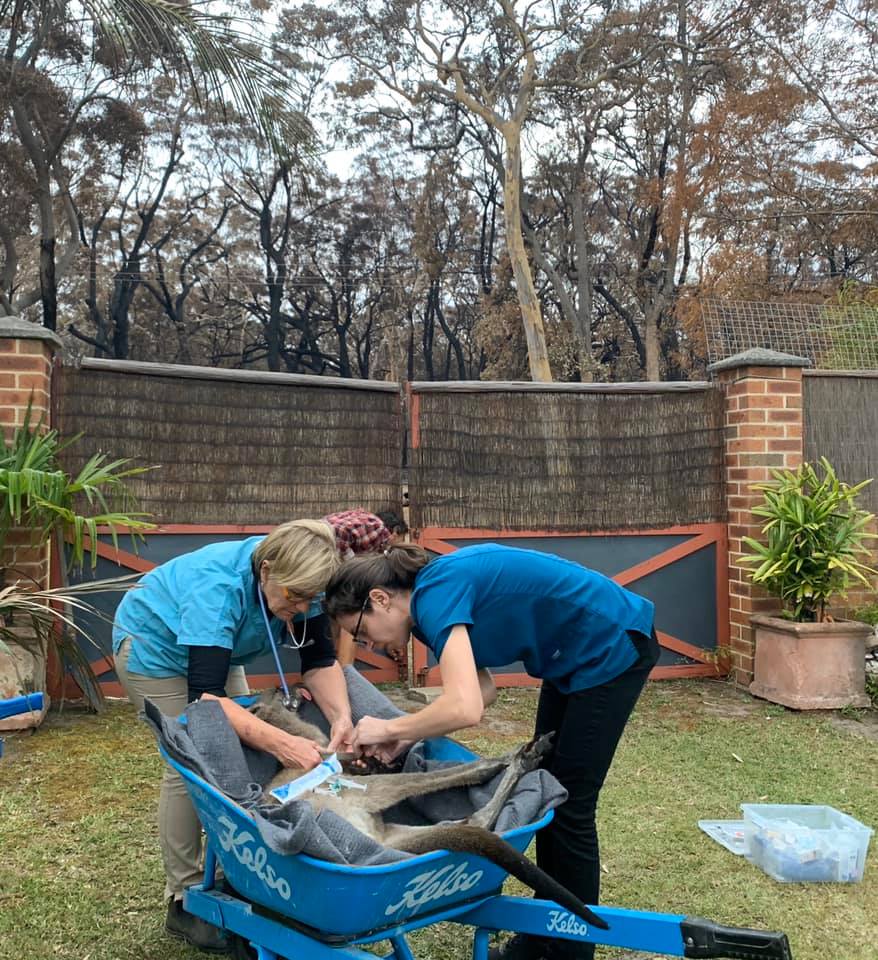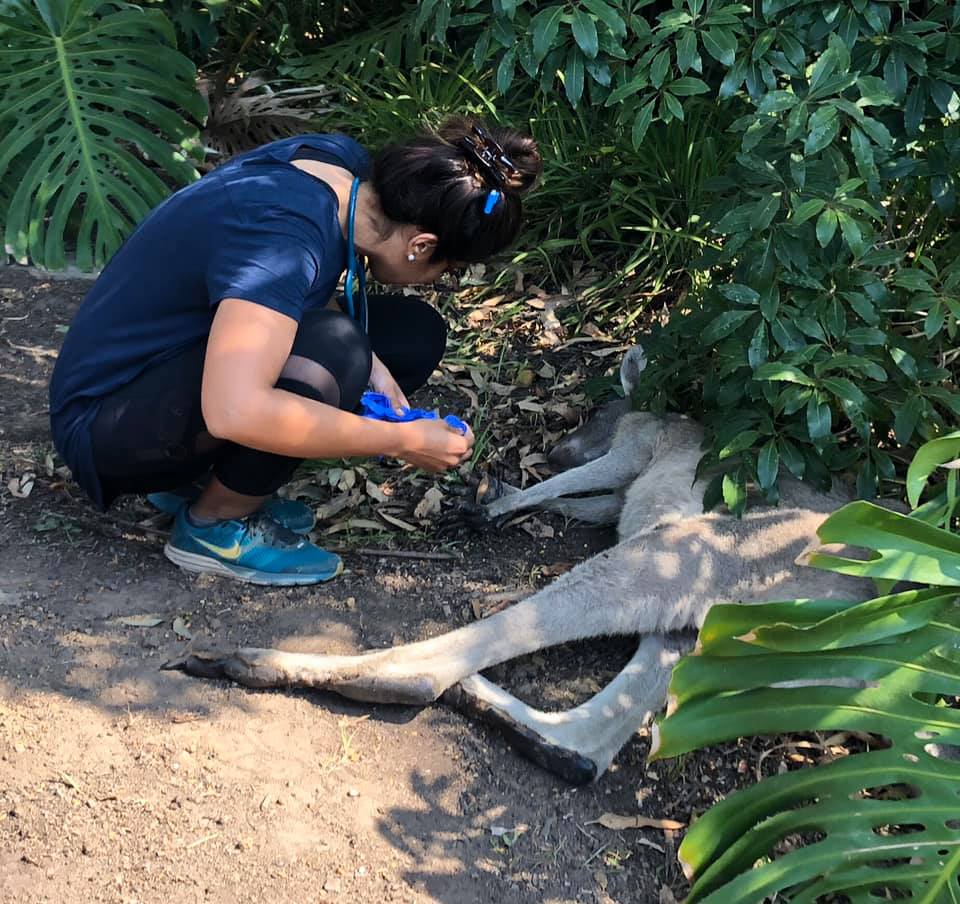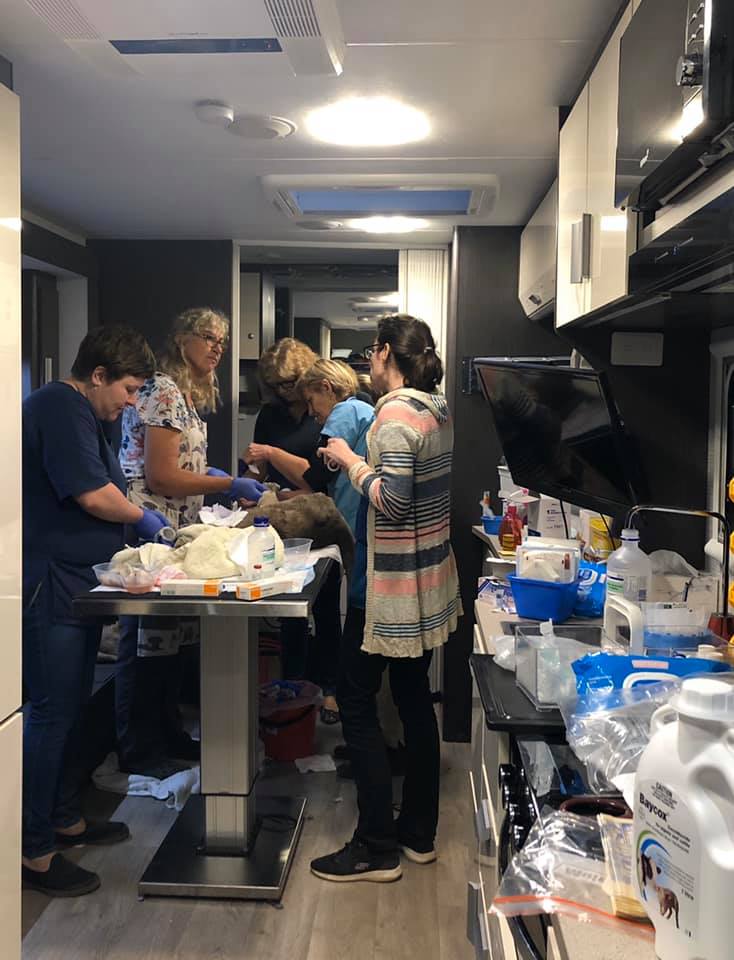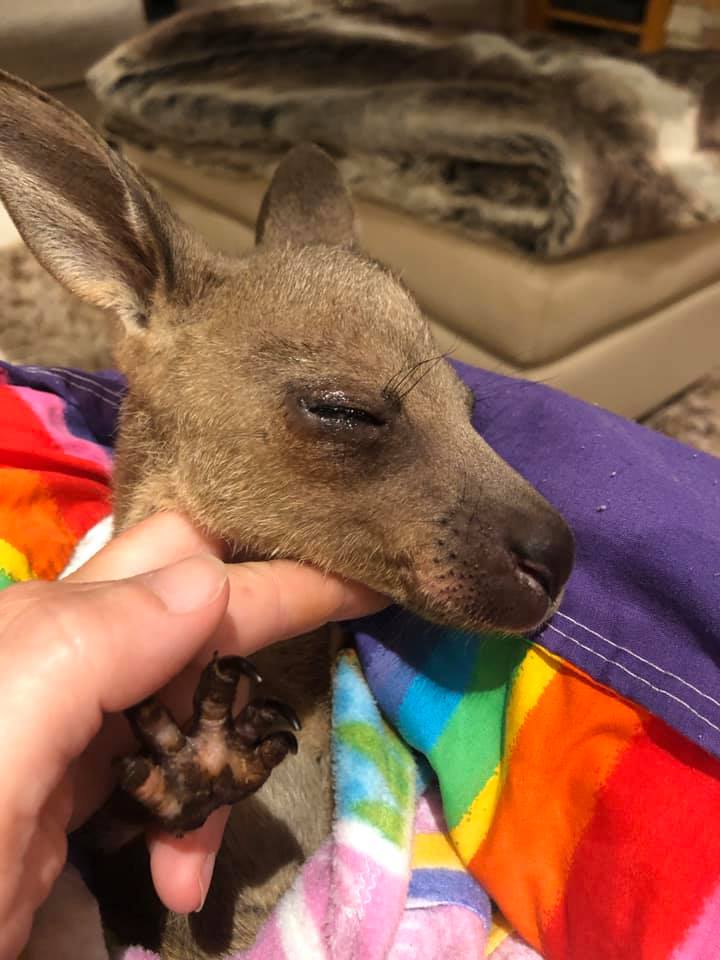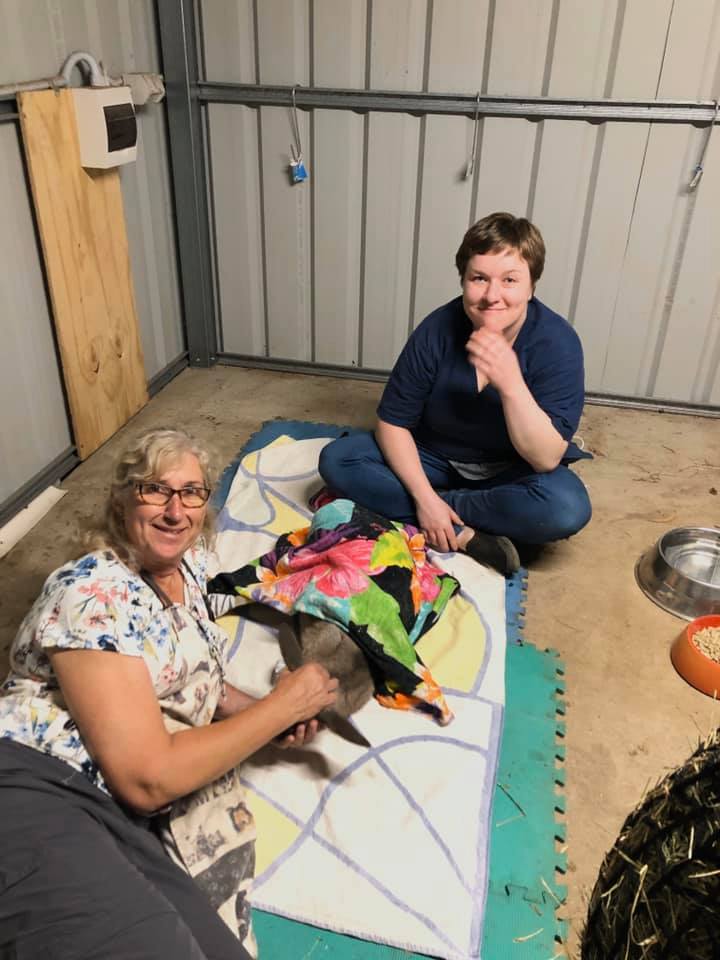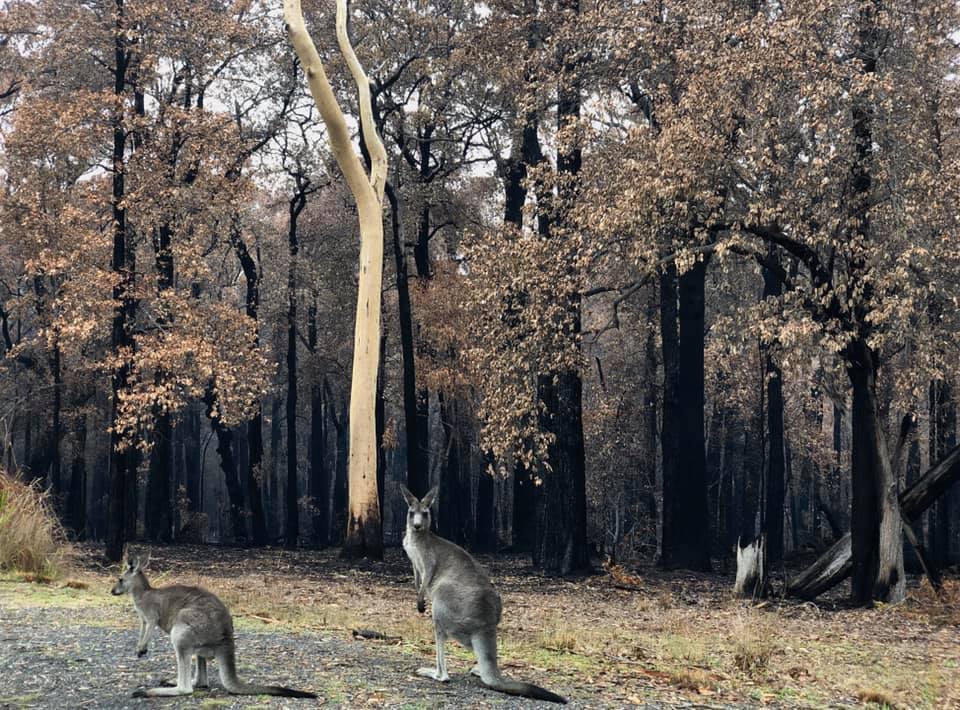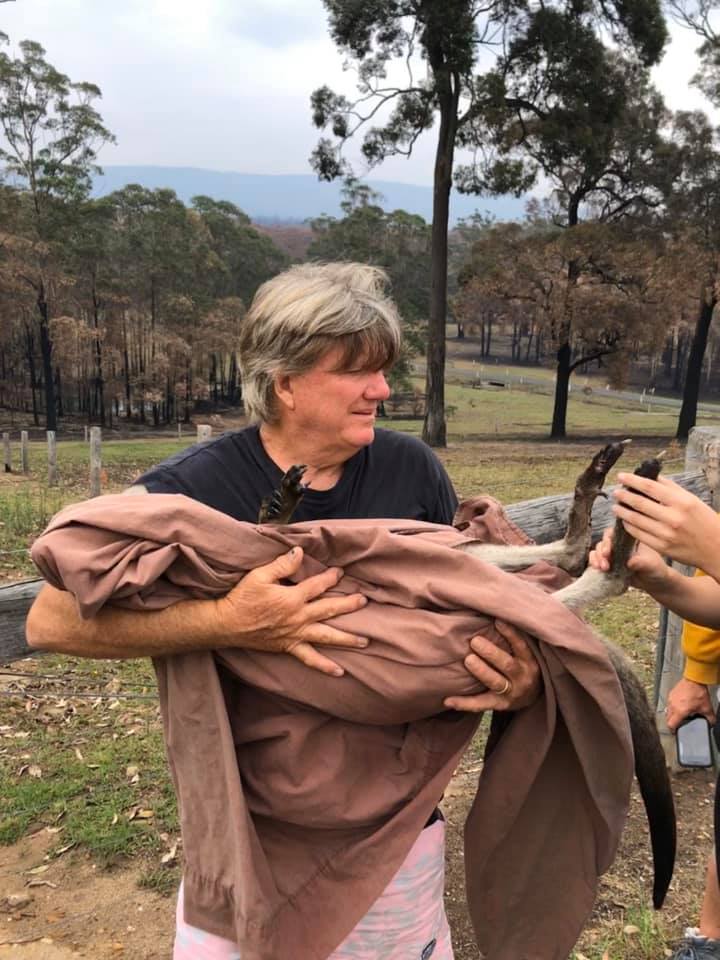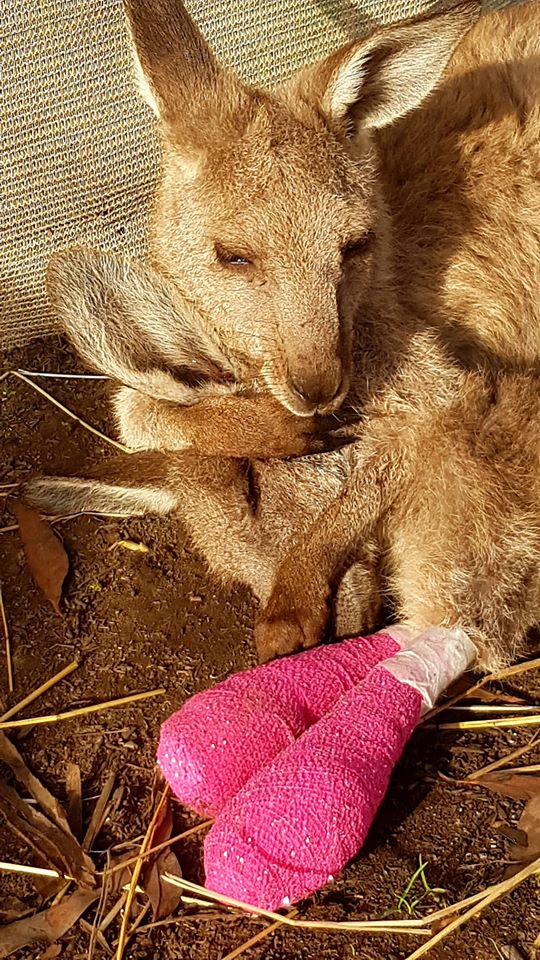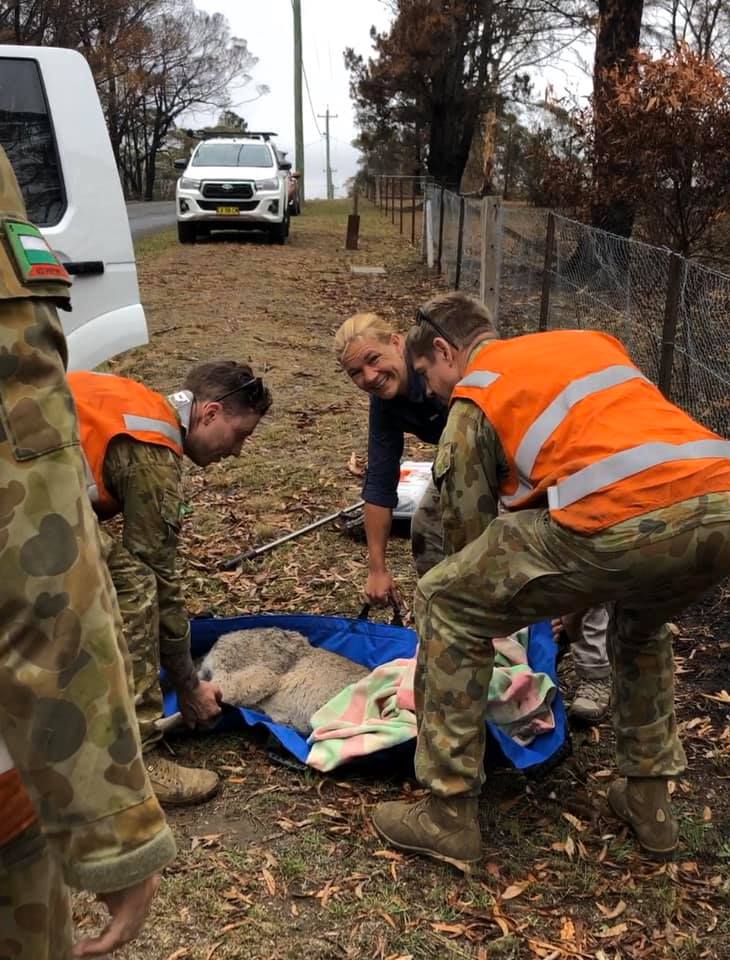January 26 - February 1, 2020: Issue 435
Sydney Wildlife Mobile Clinic's Inaugural Run Into The New South Wales Firegrounds Has Been Supported By The World's Leading Wildlife Organisations And Carers: January 2020
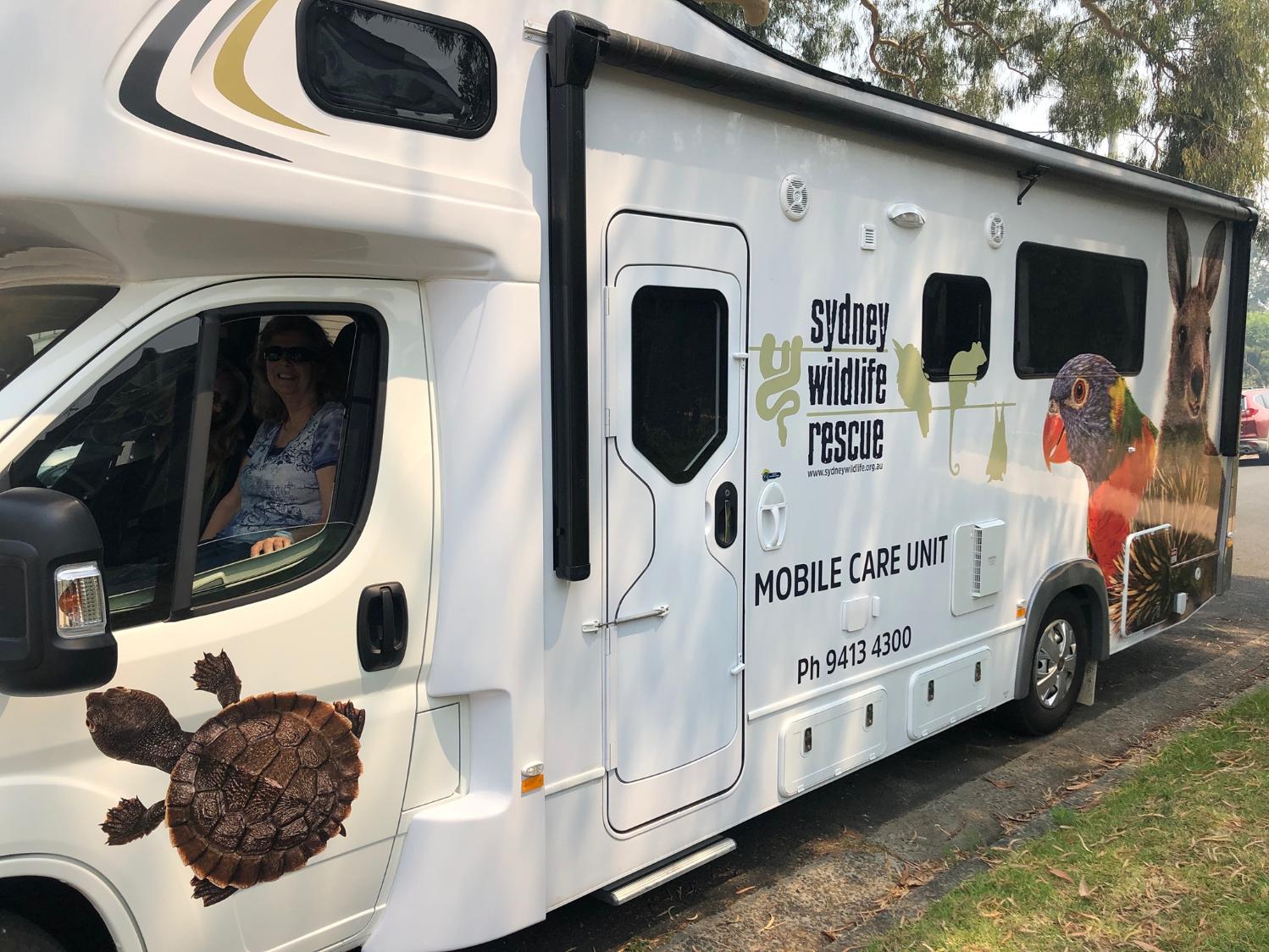
On Saturday January 11th the Sydney Wildlife Mobile Care Unit drove down Booralie Rd in Terrey Hills bound for the South Coast to provide veterinary assistance to fire-affected and burnt wildlife.
This was the van’s ‘maiden voyage’ so it was very special for the wildlife carers and veterinarians travelling with them to enjoy some community spirit with a great send off. There was a convoy as along with the van, 6 volunteer veterinarians, 3 volunteer rescuers, 3 kangaroo joeys and a few media crews went with them. The wonderful veterinarians volunteering on this trip were:
Dr Margot Horder, Dr Caroline Woods and Dr Nandita Kataria - all from Collaroy Plateau Veterinary Hospital; Dr Izi Sladakovic from NVS/AVES in Terrey Hills; Dr Kathleen Graham from Kellyville Veterinary Clinic; and Dr John Thirlwell and Kimberley Moore from Belrose Veterinary Hospital.
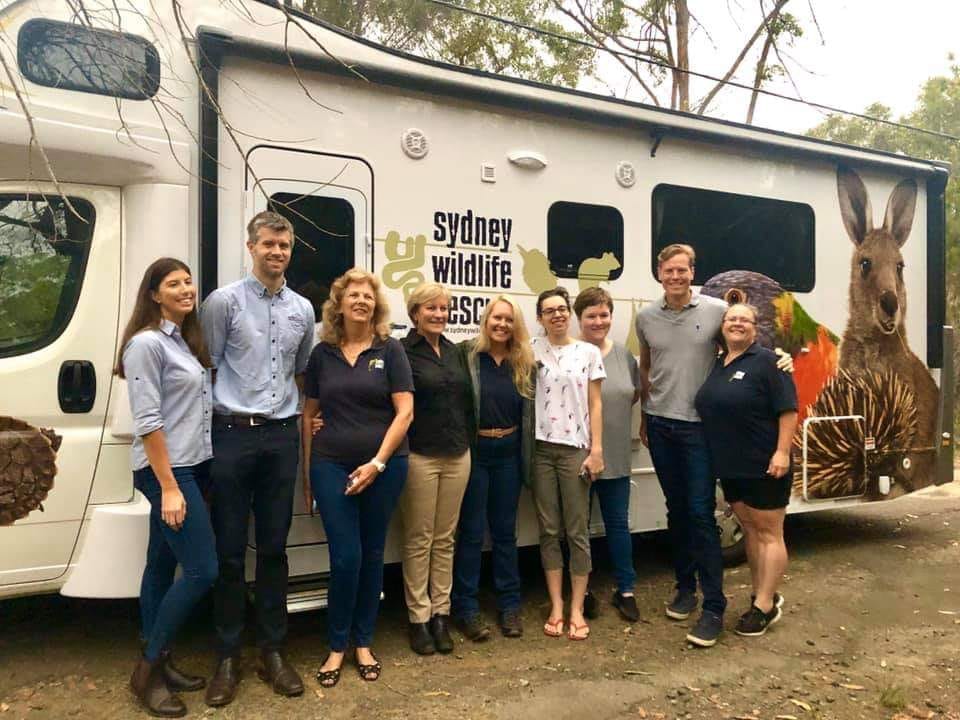
The vets who kindly volunteered their time to help the Sydney Wildife volunteers: Kimberley, Dr John, Joan, Dr Margot, Lynleigh, Dr Izi, Dr Kathleen, Dr Lewis, and Toni. - heading south on January 11th, 2020 - Sydney Wildlife photo
Most of their veterinary supplies were kindly provided by Mona Vale Veterinary Hospital, Northside Veterinary Specialists (NVS) at Terrey Hills, Collaroy Plateau Veterinary Hospital and Terrey Hills Animal Hospital and Sydney Wildlife's own Anne Jackson who started up MediDivert - a system whereby unused medical supplies from Hospitals are diverted away from landfill to where they are needed most.
Since working on the South Coast they have been at Lithgow and are now in the Blue Mountains, with another crew of Sydney Wildlife volunteers, headed by Joan Reid and Lynleigh Greig and the mobile clinic leading the way with another amazing group of internationals and locals supporting them - showing what can be done for our precious wildlife.
Our hearts go out to the estimated billion animals killed or injured in these catastrophic bushfires: koalas, kangaroos, wallabies, possums, sugar gliders, wombats, kookaburras and other birdlife, to name a few, and the unfathomable scale of suffering and loss of habitat. It is absolutely heartbreaking. Unfortunately the rescuers and carers have not found as many animals as they had hoped. Many that were found were suffering from smoke inhalation and bad burns and had to be put to sleep.
Each loss has been devastating on those who have left our area to help and those whom they have gone to help.
A few excerpts from those firegrounds:
Today was interesting.
So many beautiful things and so many heartbreaking moments.
The amazing Sydney Wildlife Rescue van rocked up with 6 vets, vet nurses, and a car trailer full of supplies. All staying and spending $ in the local area, self sufficient and worked non stop all day. They are all awesome.
Dane and Sophie met us at Berry with 2 packed boxes of burns injury supplies sent down from the port Macquarie koala hospital.
Can’t remember where I did rescues now...... but everywhere!
The vets saw Tucker after his accident on Saturday.
He has a broken jaw but he’s a trooper and we’re hoping cause his little he’ll be ok.
2 young, strong gorgeous blokes just rocked up from the highway with a Ute each full of supplies, water, food everything! And are staying for 3 days to do jobs.
Oh did I mention they drove from Nth Queensland!
Someone, don’t know who dropped 10 bales of hay, fruit veg and 15 feeding stations on my front lawn.
A young Burgh girl had raised over $400 making and selling bracelets outside Coles and is donating all of it to Adrinas sanctuary
Tragically one of Adrinas original and oldest rescues, Binta, that had been released but came back 3 days ago not looking well and wanted his mum, just dropped.
Vets say she died of maybe burnt airway/lungs.
This hurt my heart bad because I know it broke her.
Last job of the day was a gorgeous boy in our next street that neighbours and I had been watching for 3 days.
After being tranquillised and checked by vets he was put down.
He was just too badly burnt.
He’s now out of pain.
Thank you so much to everyone that has contributed to help our wildlife.
This will be ongoing. For a long time yet. - Melinda Whiteside Ross, January 12th, 2020Inside the van, outside the van, out in the fire grounds and in the enclosures - our volunteer veterinarians have been working extremely hard for the fire-affected wildlife.
Huge thanks to Adrina and Wildlife Rescue South Coast for allowing us the honour of being part of the team. For the wild ones - Sydney Wildlife Mobile Care Unit, January 13, 2020
Seeing patients inside the care unit and out.
Working out in the field.
Working out in the field.
Working inside the Sydney Wildlife Mobile Care Unit van
Treating burns to little paws, feet, tails and eyes.
Ensuring they recover well.
Being in the fire grounds has been gobsmackingly sobering. The sheer scale of devastation, desolation and decimation is beyond description.
We were invited onto people’s properties to assess the kangaroos at their places and - even ‘though they have lost absolutely everything themselves - they are still putting out food and water for the wildlife. We just want to throw our arms around the entire community.
Our contribution is puny compared to what needs doing but we are so grateful to Wildlife Rescue South Coast for allowing us to be part of the team on the ground.
The volunteer vets have been working hard inside the van, outside the van and out in the field, with the help and love knowledge of the rescuers and carers down south.
Together in solidarity - for the wild ones - Lynleigh Greig, January 14, 2020
At Lake Conola, January 17 - Lynleigh Greig photo
This is the rescue that broke us...
The love this man had for this little kanga on his property made us all cry.
Her feet were so badly charred that she could not be saved - Lynleigh Greig, January 19th, 2020
The rescue that broke hearts
Thought I was doing well today - only cried a couple of times - but this got me - Ash cuddling Flame and letting her know she's not alone and he loves her and to hang on and keep fighting - you gotta look after your mates right?!?! - Sonja Elwood, January 21, 2020
Doing more ‘black walks’ but we are now based in a totally different area - Lynleigh Greig, January 21, 2020
When the fire grounds are opened up to wildlife rescuers, they do what they call a 'black-walk'. Any injured animals that can be treated are usually ‘darted’ with a tranquilliser, if mobile still, and brought straight into care. Lynleigh has shared a video and photos this week of Australian Army men and Reservists helping them move the larger, heavier kangaroos to where they can be treated.
What is most apparent from those videos taken by Sydney Wildlife carers in these areas is the silence; no animals, no birdsong - their photographs, when they find an animal - show how much our wildlife are suffering; hungry, sick and injured and alone.
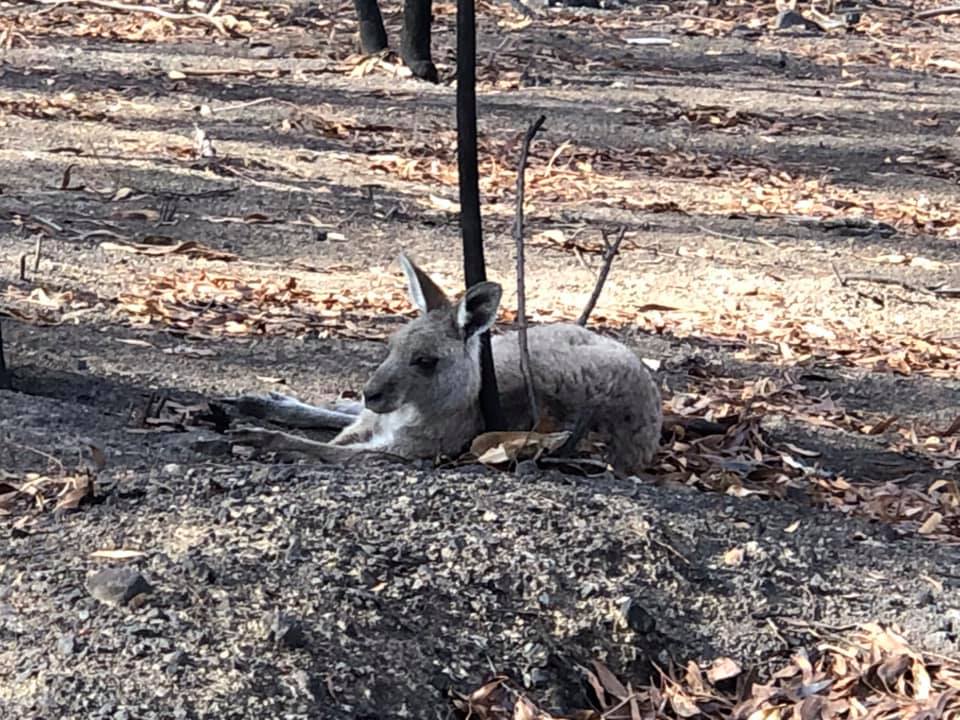
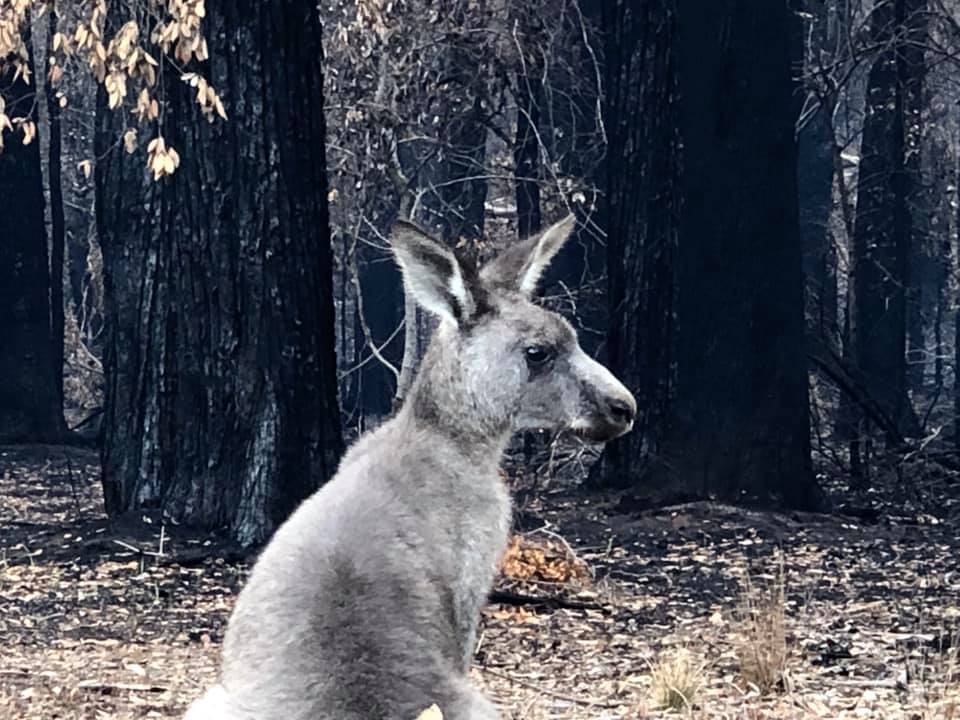
Yesterday our Search & Rescue was hampered by the dust storms and today we arrived on a rescue site and were greeted by a sudden torrential downpour followed by mudslides! All the ash was dumped into the dams, so the wildlife will have to depend on the watering stations set up by volunteers and members of the public. ARC volunteers and local WIRES volunteers have been doing food drops to properties, as well as replenishing water stations. - Sydney Wildlife Mobile Care Unit, January 24th, 2020
We have spent the better part of the past 3 weeks covered in ash, mud, blood, tears, bugs and the suffering of animals. Nature really tested us - fires, storms, flash-flooding, mud-slides.
But we are meeting some wondrous creatures and some saintly humans – Lynleigh Grieg, January 24th, 2020
We had some help lifting mum kanga into the transportation vehicle, bound for the field clinic. - Sydney Wildlife Mobile Care Unit, January 25th, 2020:
A few weeks on those residents living in the fire areas have been sharing ‘photos of hope’ that feature everything from wombats they knew coming home, baby waddling behind, to vastly diminished groups of wallabies and kangaroos returning to areas where they used to feed or find water, to images and videos of wildlife carers doing 2am and 3am feedings for babies after already putting in a 12 hour day/night.
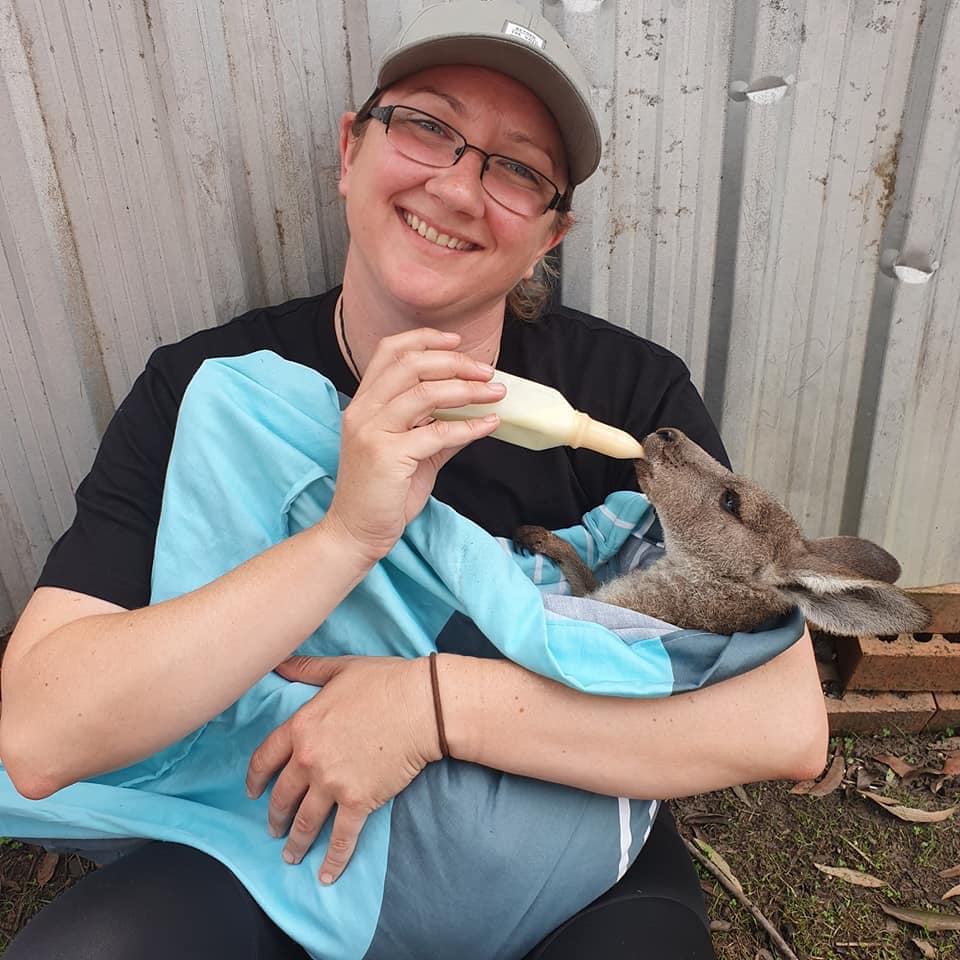
Bottle time for this baby - Sonja Elwood photo
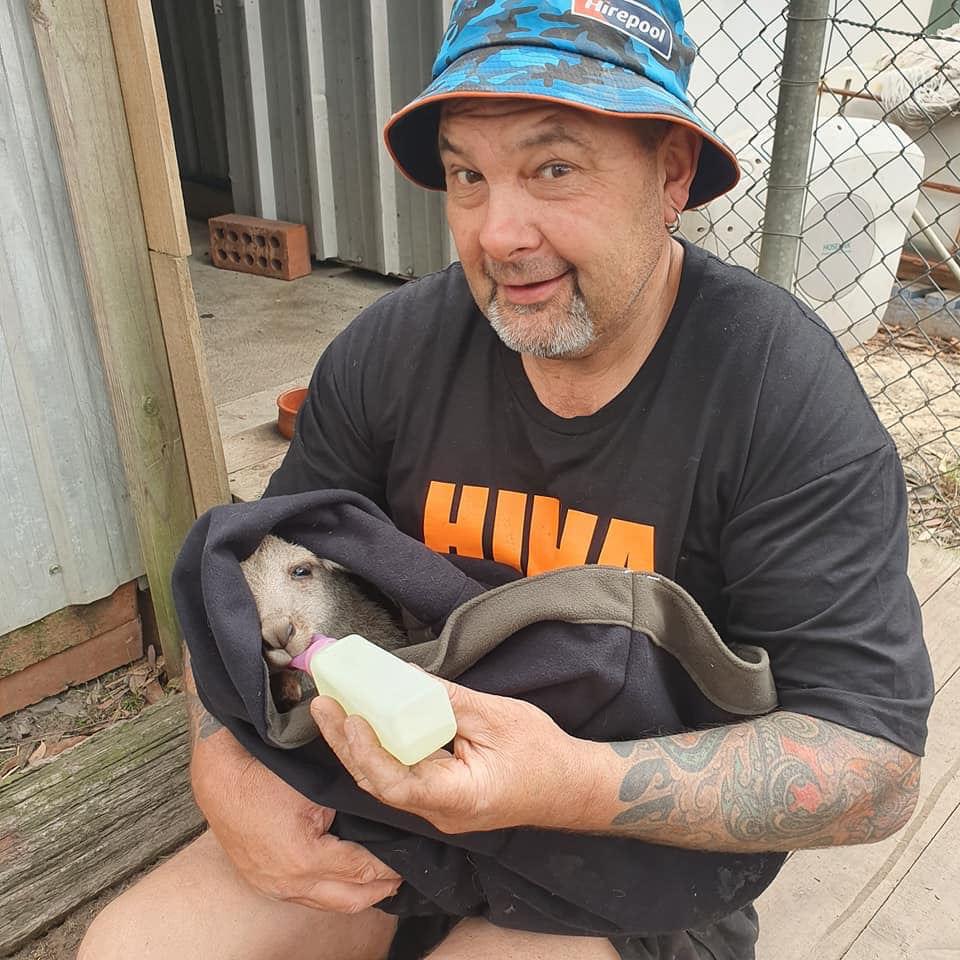
Bottle time for this baby too - Sonja Elwood photo
Trying to keep focused on what we can do has been the universal response.
So many incredible organisations have been working in unison in the New South Wales firegrounds south and west, all called in and co-ordinated by Sonja Elwood, the founder of Sydney Wildlife and part of the NSW Wildlife Council, the peak body for wildlife rehabilitation in NSW. With more than 90% of the NSW Wildlife Council (NWC) member groups now within fire-affected areas, and the remaining 10% operating in areas experiencing years of the lowest ever recorded rainfall, Sonja has not slept much for weeks.
"Many are struggling to cope with the devastating amount of hungry, injured, orphaned, burnt and starving wildlife in the wake of the record-breaking drought and recent catastrophic fires throughout south-eastern Australia," Sonja said this week.
Those who have responded are, of course, Sydney Wildlife Rescue and the Sydney Wildlife Mobile Care Unit, along with WIRES, RSPCA, World Vets, Vets Beyond Borders, Animals Australia, Southern Cross Wildlife Care, Tree of Compassion, Helping You Help Animals NZ (HUHANZ), Wildlife Rescue South Coast (WRSC), International Fund for Animal Welfare (IFAW), Humane Society International (HSI), Animal Disaster Emergency Response Germany, Search and Rescue Canada. Discussions have also taken place with a UK-based organisation, whose representative will arrive today, Sunday January 26th.
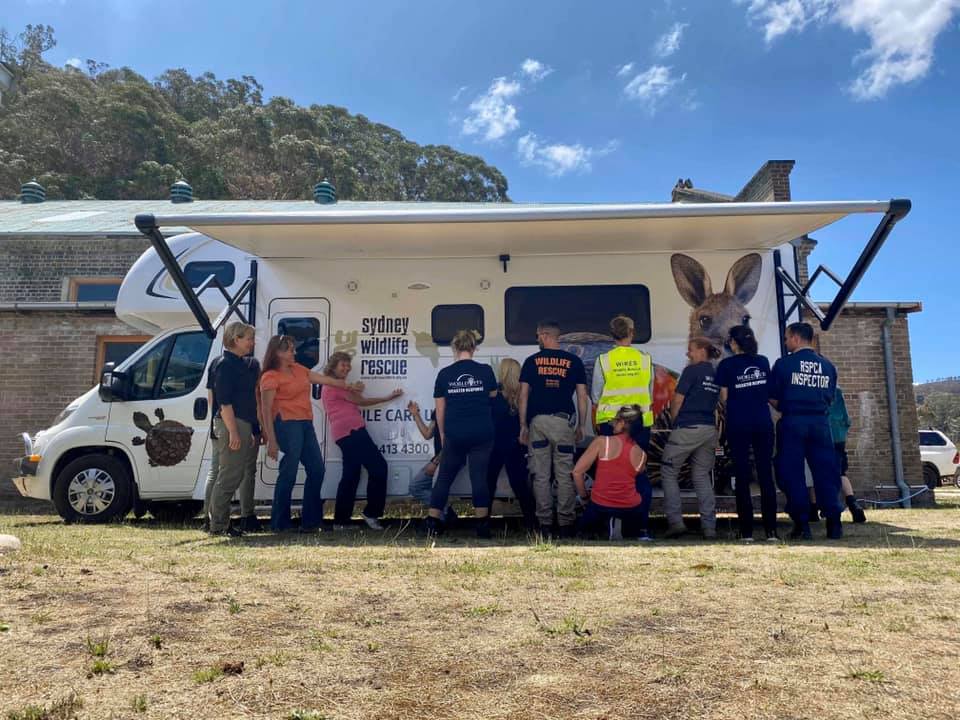
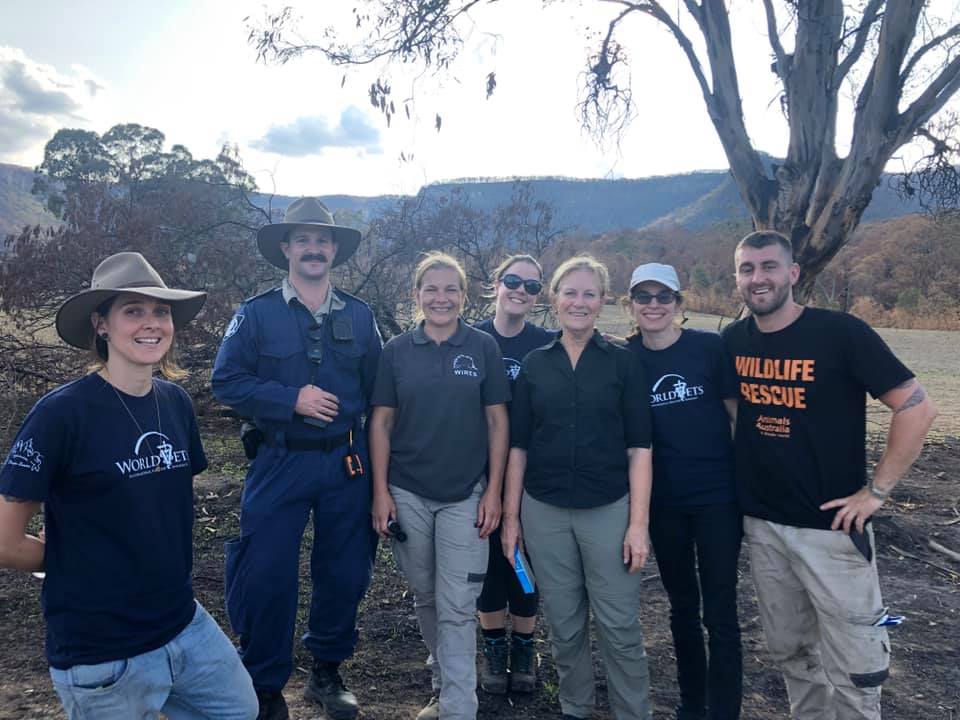
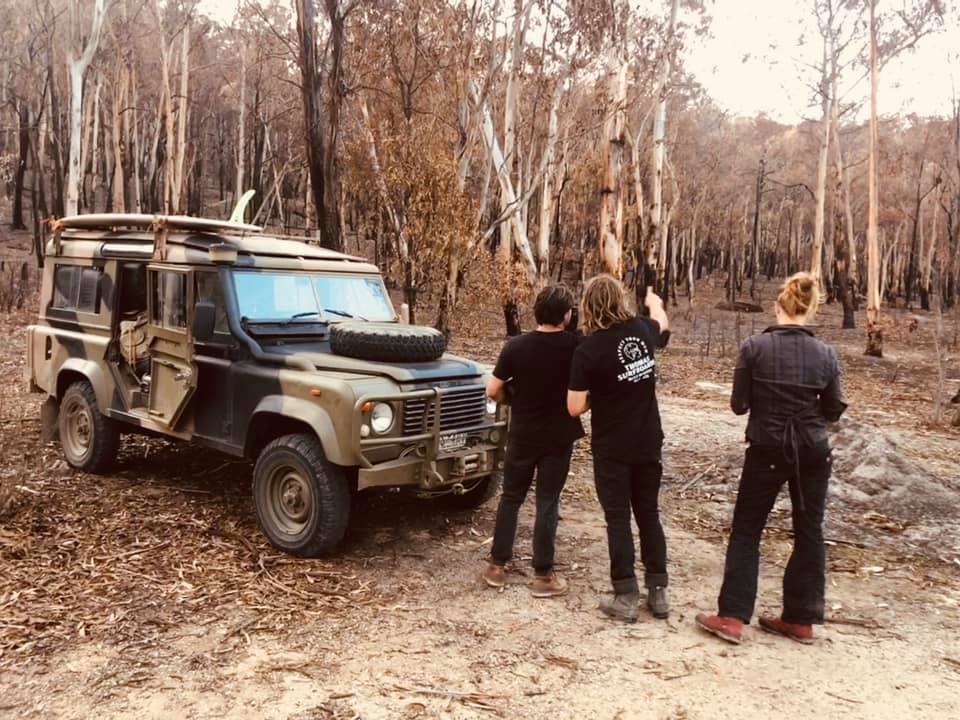
Sydney Wildlife Rescue, WIRES, RSPCA, World Vets, Vets Beyond Borders, Animals Australia, Southern Cross Wildlife Care, Tree of Compassion, ARC and many more organisations all working together for the welfare of our most precious Aussie treasure - our wildlife. Sydney Wildlife Mobile Care Unit photos
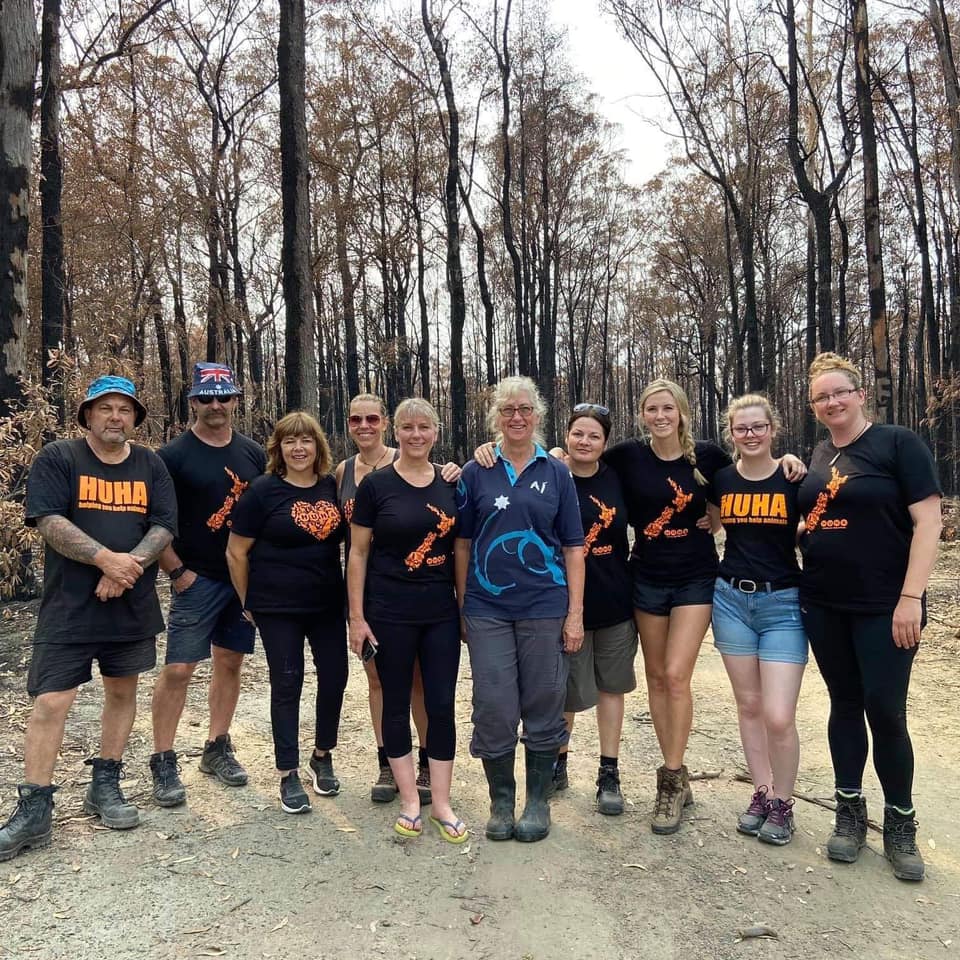
The Helping You Help Animals NZ team on the firegrounds - NWC photo
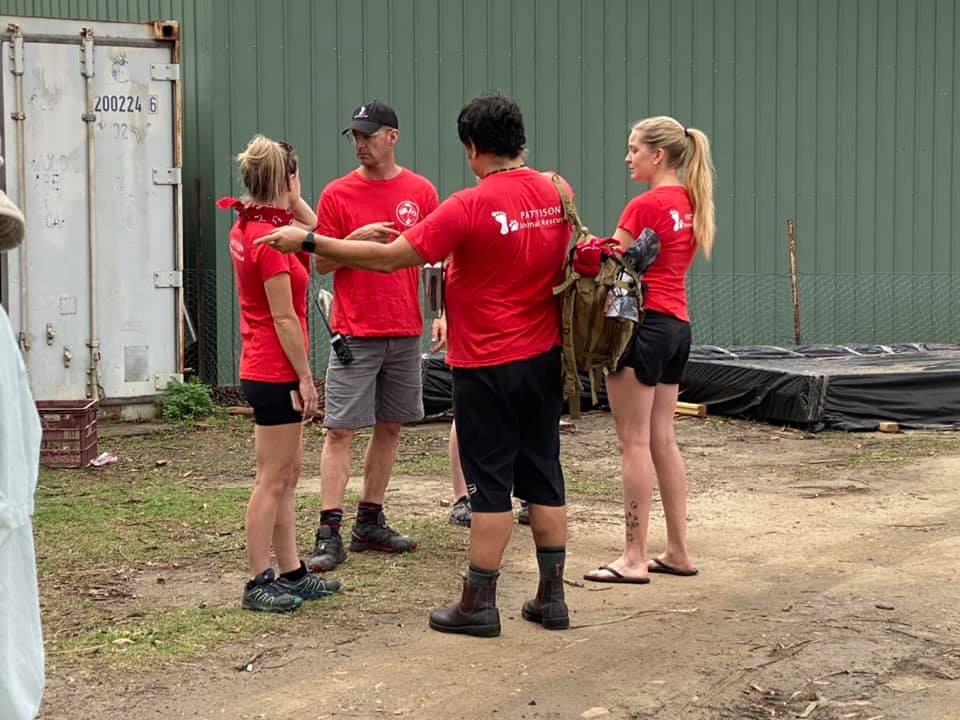
The Search and Rescue Canada on the firegrounds - NWC photo
"These expert teams are providing vital help at this time of crisis - not only are they saving lives, they are providing much needed support and respite to our carers who are working around the clock in traumatic and exhausting circumstances. We have been witness to the most amazing kindness from all over the world - the words “thank you” simply don’t seem enough. "
Using an extensive network built on local knowledge NWC have coordinated the deployment of these organisations to where they are most needed.
"Being prepared for future bushfire crises and ongoing drought is critical, and the NWC look forward to contributing our experience and expertise in future State emergency response planning," Ms Elwood said.
They have been backed up by the Animal Rescue Cooperative (ARC) and the Animal Rescue Collective Craft Guild, with thousands of people all over the world, and locally, getting together to make joey pouches, bat wraps, hanging bags – so many in fact that that need has been met.
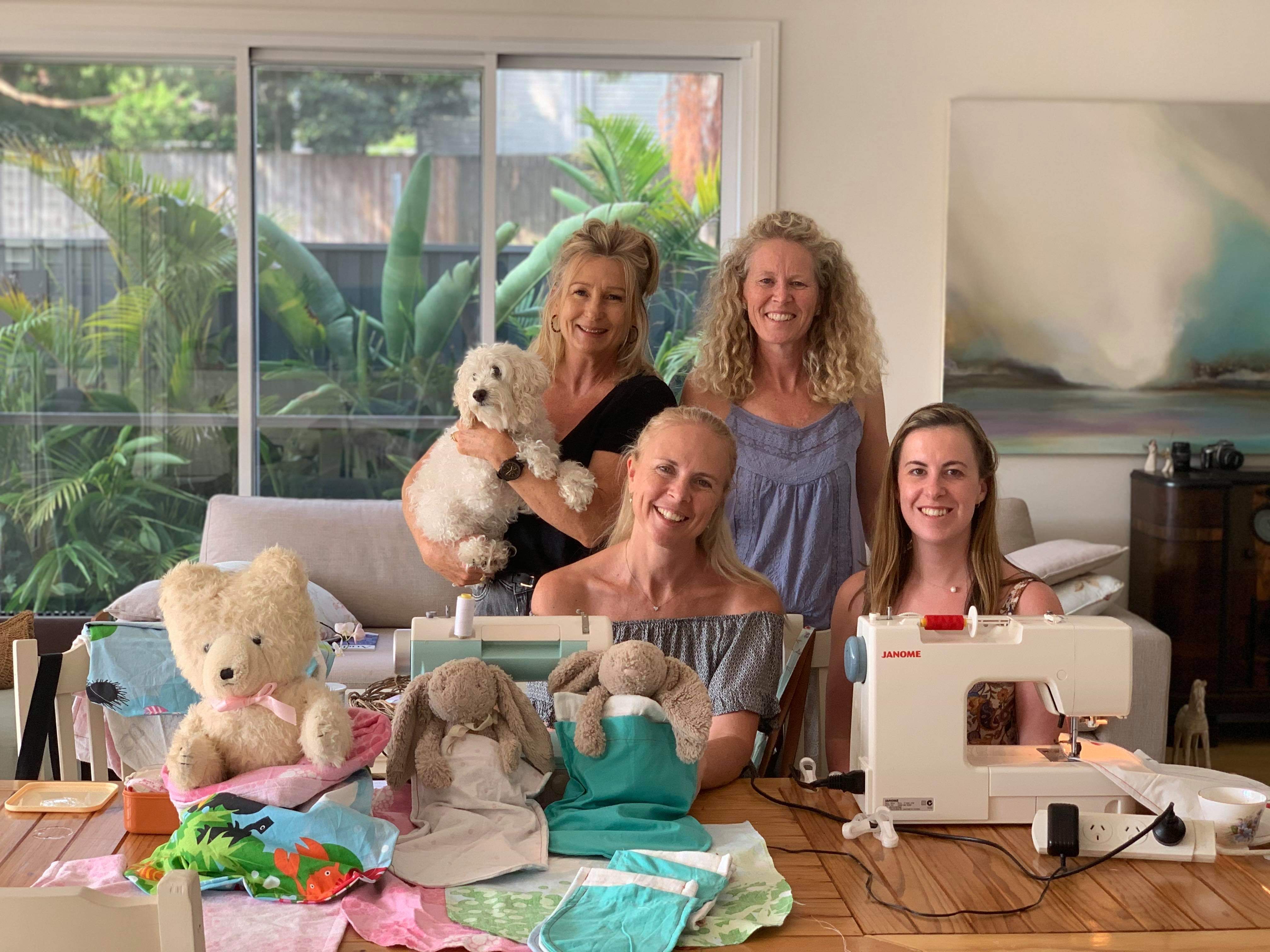
"Our first sewing bee for Animal Rescue Cooperative (ARC), making joey kangaroo pouches. These comprise 2 inner pouches made of soft flanelette and 1 slightly larger outer pouch made from cotton for each complete set. Twenty seven pouches of varying sizes (making 9 complete sets) were produced on the day, some by first-time sewers. We hope to be holding follow up sessions in the coming weeks. Our drop hub is in Jubilee Avenue, Warriewood." The names of the creators were: Peta Wise, Tegan Lowe, Kim Mete, Lisa Jackson. These are all childhood educators with Peta at Treetops Preschool in Warriewood and they hope to continue our sewing bees with the children when school resumes. - Photo supplied.
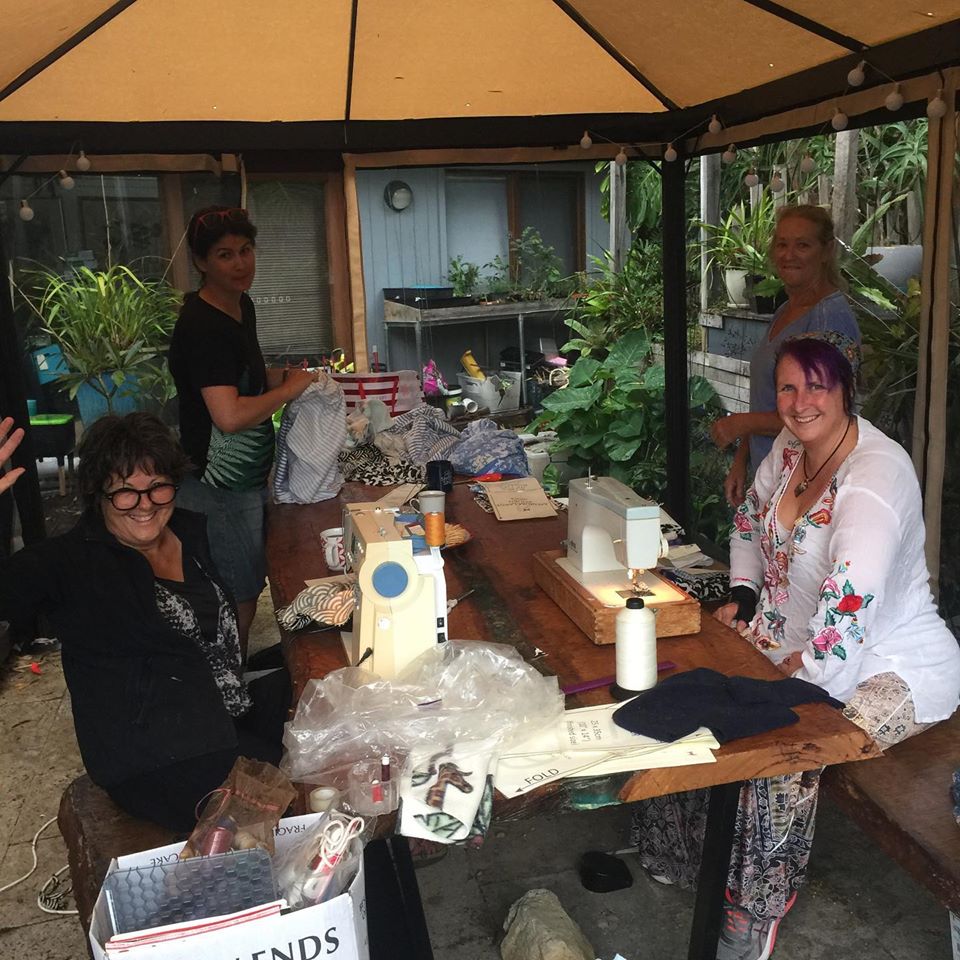
Sewing bee at Elanora Heights - more pouches being created - hosted by Selena Grifith, who is taking the photo of Bea Pierce and these other wonderful ladies. - Photo supplied.
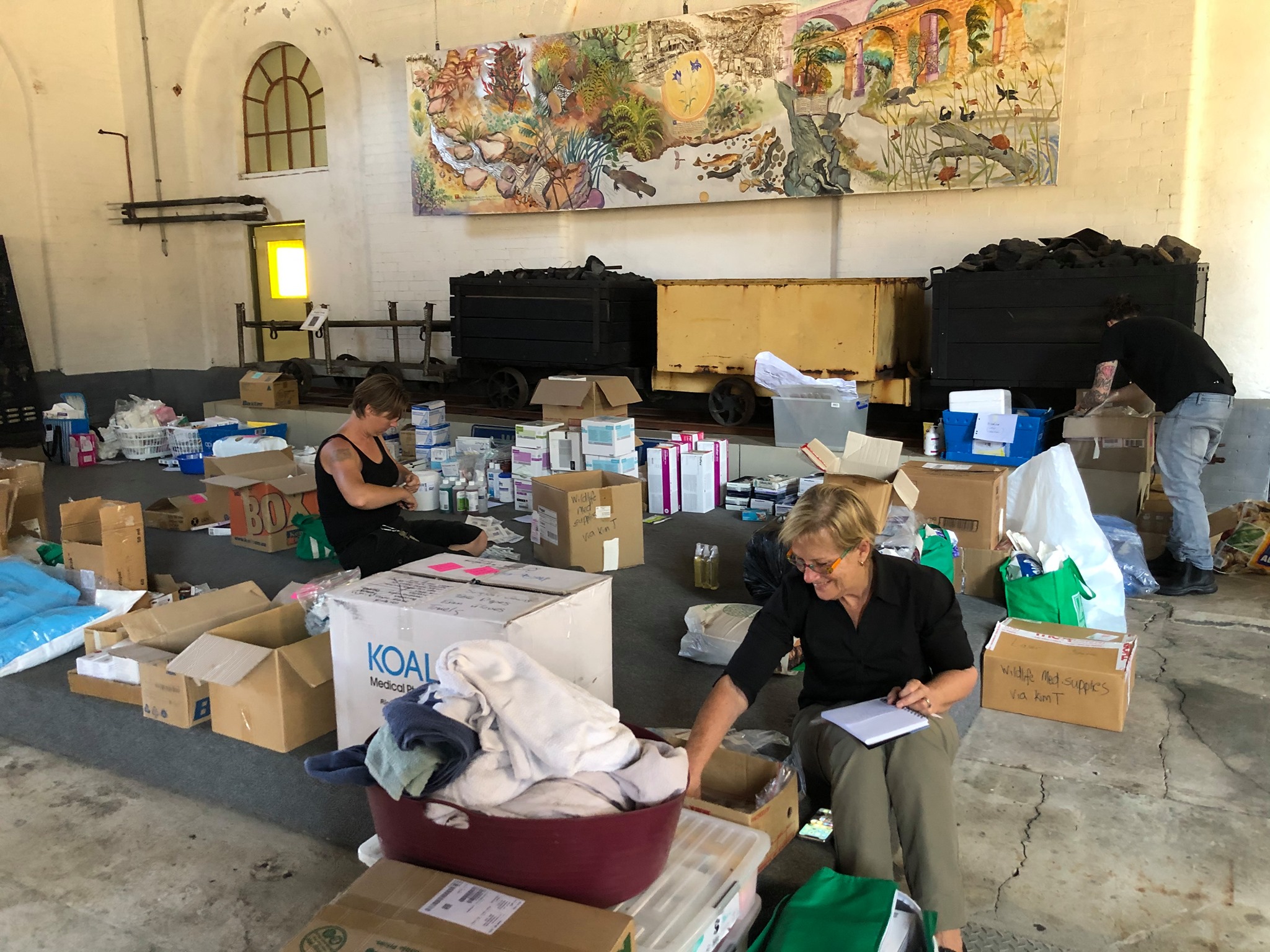
'Sorting through the ARC Donations received on the South Coast' - photo by Joan Reid, Sydney Wildlife Care
What is needed now is food for these animals as theirs has been burnt and medical supplies to treat burned and injured wildlife.
The carers also want a discussion to commence immediately to ensure any feedgrounds for animals are preserved to sustain what is left – be that a National Park someone dreams should be reopened to logging, or even currently designated logging areas. No more translocations to further state significant developments while species numbers are decimated, no more 'culling' of starving wildlife because humans bent on land-clearing have ruined their habitat and food places and the wildlife has come to their fields to feed.
Our animals are one of our greatest treasures, there are species here that exist no where else. The whole world is watching now to see how well all those who have not cared enough for or about them respond. This offers these individuals, organisations, companies and governments an opportunity to return to loving, to joining the carers in caring, to show those watching what we are all more truly all about.
After that has been achieved, and this emergency response effort is over, the mission is to make sure the wild ones are NEVER out there on their own again. Wildlife and wildlife carers must be included in emergency response planning from now.
On Friday, January 24th Sonja tried relating some of what these past weeks have been like:
"It’s going to take some time for me to process this experience - the scale, extent and intensity of these fires - the absolute broad scale holocaust of our wildlife I still can’t comprehend.
Coordinating this emergency response was not something I intended - I just had to do something. The thought of standing by and doing nothing but knowing handfuls of remaining animals are out there burnt, terrified, in pain and suffering was and remains unbearable and unacceptable to me. I wasn’t however expecting such a response. The groups of people both in Australia and from overseas that have reached out to support me as this nightmare has unfolded was so unexpected. I have met such outstanding people and they have unwaveringly stepped up to help me and I am a stranger to them and I didn’t really have a plan, just an idea of how it should be done.
And they came.
And they’ve put up with my tears and my grief, my frustration at not being able to do enough or cover enough territory, my anger that there is no coordinated response for wildlife in NSW and many other parts of Australia, and they just keep giving and encouraging me. I have been blessed and honoured to meet such incredible human beings - I simply don’t know how to thank you all."
Finally, Dear Readers, and we know this news service has pestered you relentlessly for years now to help these locally sprung magnificent carers in their volunteer work and even to help make the Sydney Wildlife Mobile Care Unit a reality - we must now ask you to please help their current and urgent rescue efforts once more:
Sydney Wildlife Mobile Care Unit in the Firegrounds: Fundraiser
With YOUR donations, we have been able to buy this van, convert it into a mobile care unit and visit areas affected by natural disasters.
We will need to regularly re-stock the unit with supplies (pain relief, antibiotics, dressings, fluids) and maintain diagnostic equipment to assist our volunteer veterinarians to devise the best treatment plan for each animal. We are now in the Blue Mountains attending to wildlife.
Supplies will dwindle quickly, given the huge quantity of animals being affected by the fires. Your donations will go directly towards the treatment of burnt and drought-affected wildlife as well as those injured under any other circumstances.
Thank you.
Contribute at: https://www.gofundme.com/f/22abqws
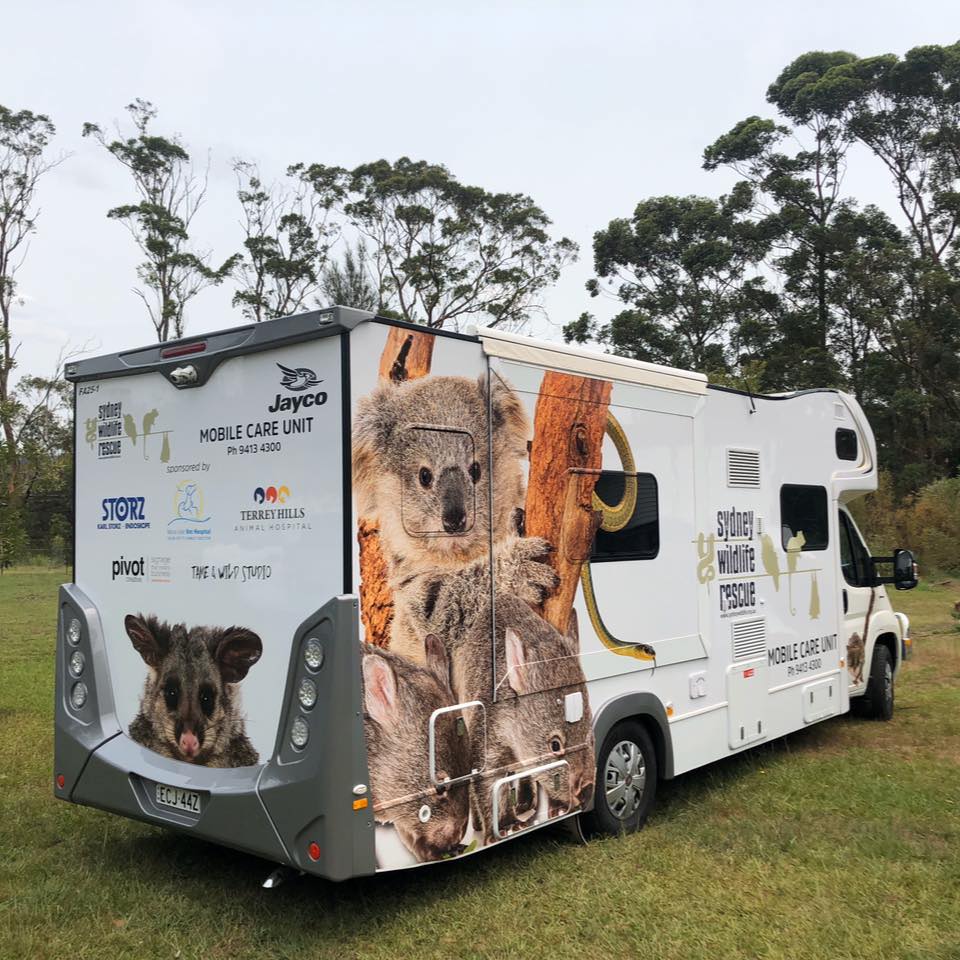
NSW Wildlife Council Drought & Fire Recovery Fund
The NSW Wildlife Council (NWC), as the peak body for wildlife rehabilitation in NSW, is asking for donations from the public to support the many volunteer wildlife rescue groups operating under our umbrella operating across the state. More than 90% of the NSW Wildlife Council (NWC) member groups, are now within fire-affected areas, with the remaining 10% operating in areas experiencing years of the lowest ever recorded rainfall.
The NWC Wildlife Drought and Fire Recovery Fund will provide wildlife rescue, rehabilitation and recovery support for ALL the volunteer NWC wildlife rescue and rehabilitation member groups and individuals in NSW as well as wildlife habitat restoration and support programs for animals struggling to survive in burnt out or drought afflicted habitat.
Please support our Wildlife Drought and Fire Recovery Fund and please share to encourage others to do the same.
Contribute at: https://www.gofundme.com/f/nsw-wildlife-council-drought-amp-fire-recovery-fund
The NWC is entirely voluntary ensuring 100% of donated funds will go directly to our precious wildlife. Please see our webpage for more details about the groups we represent and what we are trying to achieve: www.nwc.org.au
Thank you.
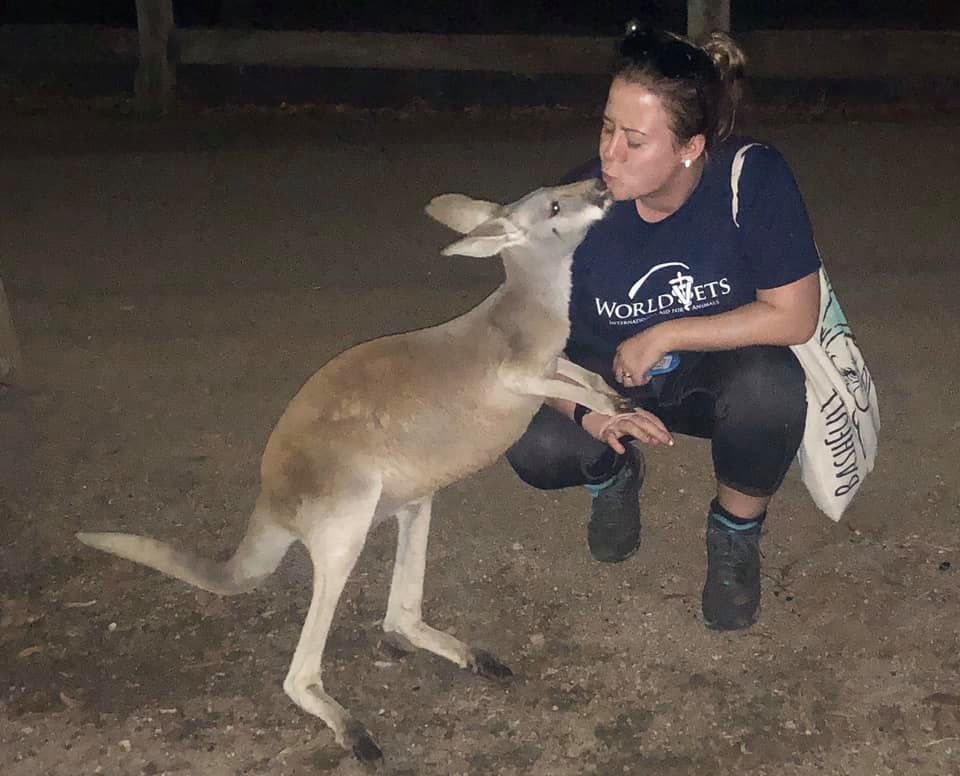
Native Wildlife Benefit From Right Community Actions
January 22, 2020: NSW Department of Planning, Industry and Environment
The NSW south coast community wanting to help fire-affected wildlife are reminded the only safe way to do so is by using injured wildlife hotlines to only report injured wildlife and by not entering firegrounds.
"It is fantastic to see the overwhelming community support for native wildlife in the post-fire recovery effort," said National Parks and Wildlife Service (NPWS) South Coast Director Kane Weeks.
"There are particular actions that the community can take to help the NPWS and its partners more effectively rehabilitate wildlife.
These actions include:
- Do not enter fire-affected areas until they have been deemed safe by the NSW Rural Fire Service.
- Report sightings of uninjured native wildlife using the Budawang Nature Map so that the NPWS and partners can prioritise recovery efforts.
- Report only instances of injured native wildlife in need of immediate care to Wildlife Rescue South Coast on 0418 427 214, or WIRES on 1300 094 737.
- Monetary donations are more helpful than materials or produce for wildlife recovery as these raise logistical challenges. People who wish to donate may do so online with WIRES or Wildlife Rescue South Coast.
- Information about providing support to native wildlife on private property can be found on our webpage Helping wildlife in emergencies.
"The NPWS is currently coordinating efforts with Shoalhaven City Council and Wildlife Rescue South Coast to safely access fire grounds to provide a wildlife response with permission and support from the NSW Rural Fire Service," said Mr Weeks.
Helping wildlife in emergencies
The Department of Planning, Industry and Environment works with the community and wildlife rehabilitation groups to rescue and care for injured and distressed native wildlife in an emergency, such as prolonged drought or after fire or flood.
We provide additional support and coordination to wildlife rehabilitation groups and work with experts to assess the health and status of affected plant and animal populations and develop and license recovery actions, such as supplementary feeding, emergency collection and captive breeding programs.
How you can help
Only licensed wildlife rescue and rehabilitation providers or qualified vets may take injured or orphaned native animals into care. You can use the IFAW Wildlife Rescue App to quickly find the closest one to you to contact. Most wildlife is not used to being handled and can become very stressed. If you find an injured animal, and it is safe to do so, contain it in a covered box in a dark, quiet place while waiting for a rescuer or taking an animal to a wildlife carer or vet.
During an emergency such as drought, fire or flood some native animals may need short term help. Although not injured, they may need access to water, food or shelter until their natural environment recovers. Only provide water or food for native wildlife if you have the permission of the land owner or manager, including in national parks, state forests, council and crown land.
Providing water
Many animals can only survive a matter of days without water. You can help a range of native animals by giving them a safe supply of clean water, changed daily to prevent the spread of disease. Never add electrolytes or sugar to the water as it can be harmful.
Considerations for water containers
Use:
- containers or water dispensers put in the shade, at a range of heights, including in trees
- strong containers to avoid collapse with a stable rock or stick in them to give safe access out of the water for birds and reptiles
- firm surfaces to put the containers on, so they don’t tip if a heavy animal tries to use it
- a cleared area with shade to allow nervous wildlife to watch out for predators and keep cool.
Swimming pools can present a danger to thirsty wildlife if no other water source is available. Keep your pool covered or secure a flotation device to the side of the pool such as a rope threaded through a pool noodle to allow wildlife to escape if they fall in while drinking. Check it daily.
There are simple watering stations you can set up. Try making a wildlife watering pod for small mammals and reptiles to use.
Providing food
Feeding native animals is generally not recommended because they have very special and diverse dietary needs. Although it’s always best for the health of wildlife to forage for food and water naturally, in times of natural disaster when natural food resources are scarce, you may want to help by providing food. Only supplementary feed until nature begins to recover. If there is still vegetation, providing water only is the best way you can help.
Remember:
- What can be offered to one animal in small amounts may be harmful to another and could result in debilitating disease or even death. Over feeding can be fatal. Always offer fresh water.
- Remove uneaten food. Wash your hands before and after cleaning and drying all food and water containers. Change them daily to prevent the spread of disease and attracting pests. Disinfect containers using a dishwasher or by soaking them in a solution of one cup of bleach added to four litres of water.
- Secure food containers in trees. Never throw food, including bird seed, directly onto the ground as it attracts predators and can make some wildlife sick.
- Never feed wildlife bread, honey, sugar, avocado, chocolate or dairy products as they are very harmful.
- Do not feed wildlife mixtures of peanut butter, honey and rolled oats (known as bait or wildlife balls) as they are harmful to some animals.
Providing shelter
You can help by making your garden wildlife-friendly by growing native food plants and creating shelter and habitat by using logs, rocks and nest boxes. Find out more about living with native animals.
Remember to keep cats, dogs and children at play away from the areas you are providing water, food or shelter. Cats quickly learn where wildlife are congregating and may stalk them.
Page last updated 23 January 2020
Conservation Scientists Are Grieving After The Bushfires – But We Must Not Give Up
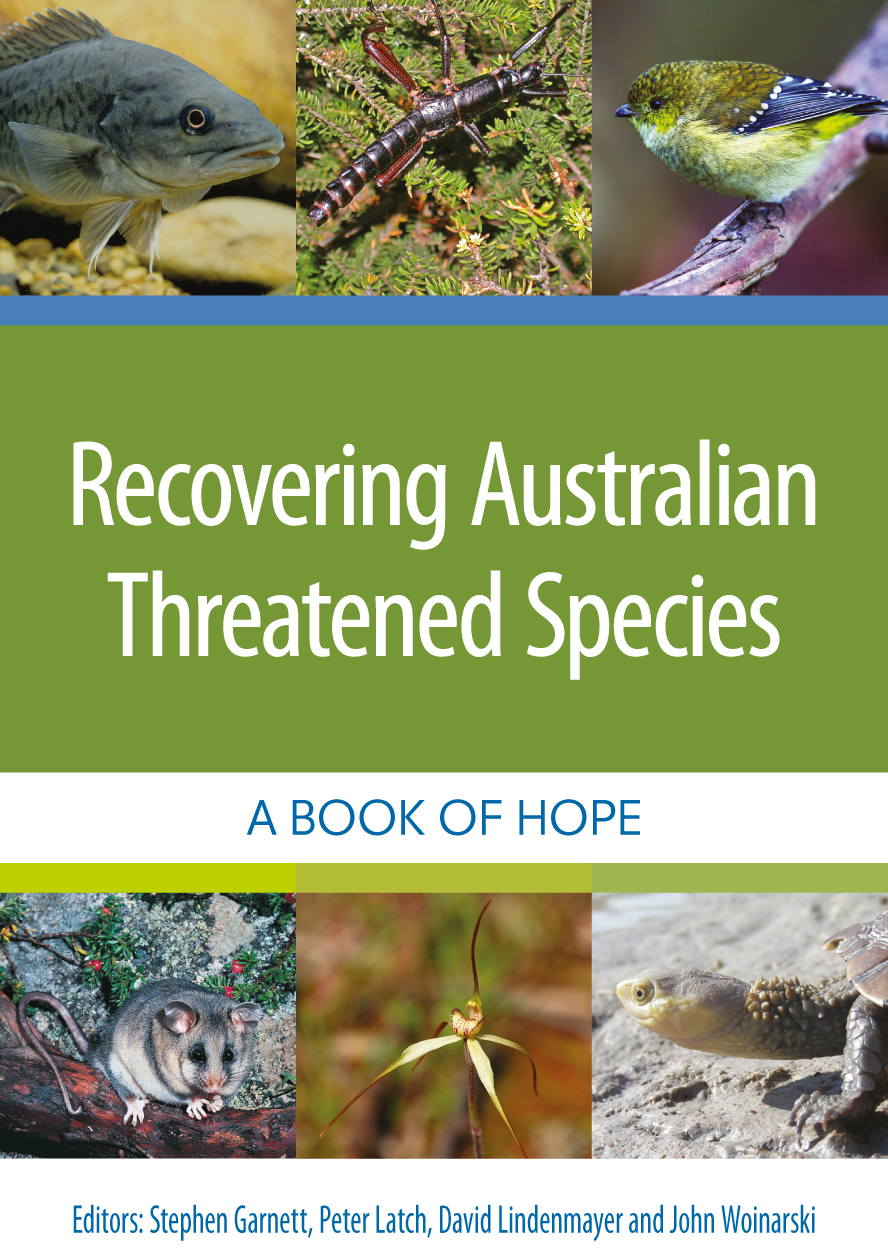 Federal government figures released on Monday showed more than half of the area occupied by about 115 threatened species has been affected by fire. Some of these species will now be at significantly greater threat of extinction. They include the long-footed potoroo, Kangaroo Island’s glossy black-cockatoo and the East Lynne midge orchid.
Federal government figures released on Monday showed more than half of the area occupied by about 115 threatened species has been affected by fire. Some of these species will now be at significantly greater threat of extinction. They include the long-footed potoroo, Kangaroo Island’s glossy black-cockatoo and the East Lynne midge orchid.